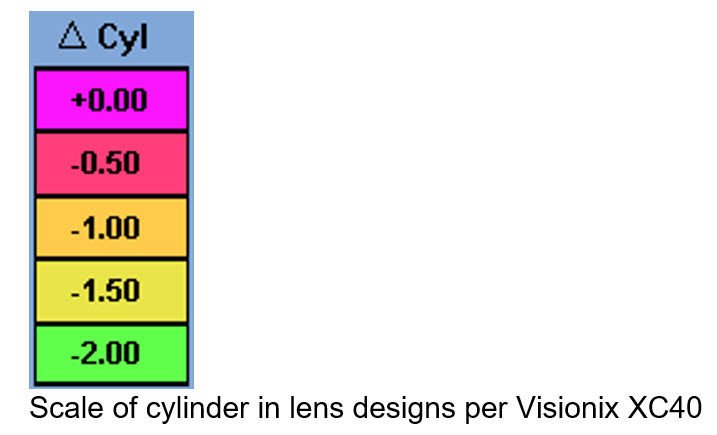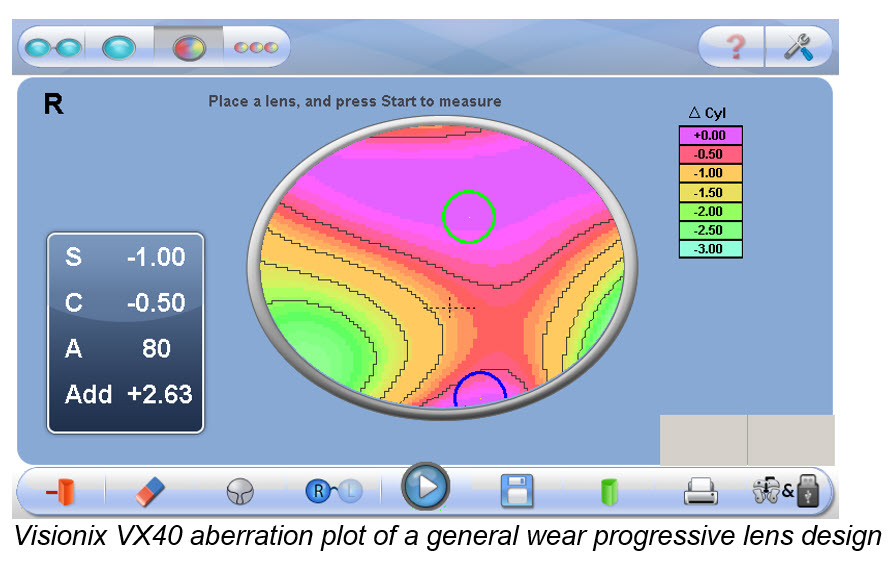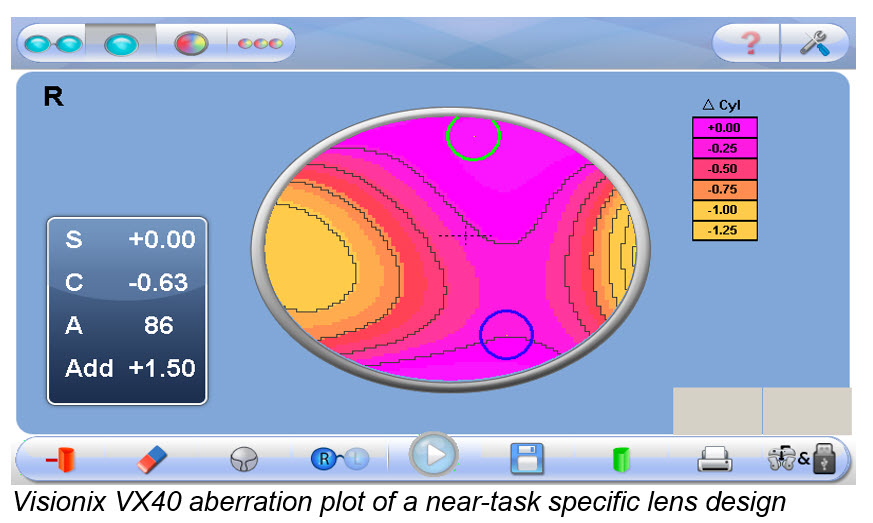By Michelle J. Hoff, OD, FAAO, ABOM, FNAO,
Isabel Kazemi, OD, FAAO,
and Mindi Lewis, MA, ABOC, FNAO

May 5, 2021
The digital eye strain, which so many people experienced during the pandemic, can be helped with near-task-specific glasses. Here is how prescribing and selling these glasses can both enhance patients’ lives and create an impressive new revenue stream.
A Growing Challenge & Opportunity
The Vision Council Digital Eye Strain Report recommends to your patients that they talk to their eyecare provider about their digital device habits to determine the type of computer eyewear that is right for them.
The report directs your patients to “be sure to discuss during a comprehensive annual eye exam how much time you spend in front of a digital screen, the typical distance between you and your screen and the type of work you are doing.”
The report also suggests that patients “may need lenses ideal for sustained computer work that offer good computer vision, and allow clear vision at the office and home.”
Near-task-specific lenses, which are carefully prescribed and marketed, can fulfill these patient needs while generating $160,000+ annually.
What Are “Near-Task-Specific Lenses” & How Can They Help?
General-wear progressives are not ideal for computer or digital device use. The corridor of the lens design is typically narrow and too low for “straight ahead” viewing, causing the patient to compromise their posture by raising their chin.
The optical industry has developed completely new lens technologies and designs that are customizable to address visual and ergonomic demands.



Not every worker’s near tasks are the same, so lens manufacturers offer a portfolio of near-task-specific lenses. It is important to understand their differences. For example, some patients may spend the majority of their time stationary at their work area. Others may have a dynamic work requirement, in which some distance viewing, as well as intermediate and near work, are part of their typical work day.
Manufacturers have several product portfolios that allow you to prescribe either full range near-variable-focus (NVF) lenses in which some distance viewing is available within the lens, or lenses that are solely for intermediate/near use.
Both designs provide patients with wide, clear and ergonomically effective vision and posture.
What are the possible visual solutions we can prescribe to presbyopic patients requiring intermediate to near-range vision help?
A general use PAL is great for daily activities, but has a small intermediate zone, with reading prescription located at the very bottom of the lens. Other options are:
When the patient’s near Add power is low, single-vision lenses are appropriate for all digital devices.
Bifocals or Powerboost lenses can be prescribed as intermediate/near, with intermediate Add prescribed in the distance zone of the bifocal.
NVF lenses are specifically designed and customized with the patient’s computer, near and surrounding visual needs in mind.
How Big is the Opportunity to Expand Profitability By Selling Near-Task-Specific Lenses?
With as much as 50 percent of Generation X and Baby Boomer patients falling into the presbyopic group, likely half of them would be advanced presbyopes requiring an intermediate/near prescription. This is a significant opportunity for a practice in which most patients fall into the Generation X or Baby Boomer group. It also is worth noting that the oldest Millennials are approaching forty, and will soon be in need of near-vision help. For example, in a practice seeing 20 patients per day, 25 percent or 1,300 patients annually, should benefit from having a second pair of glasses for digital device use or near-visual demands. That translates to $162,715 annually ($215 NVF + $125 AR). This also doesn’t include the price of a new frame or upgrades to higher index materials.
Other Articles to Explore
To maximize the profitability of prescribing this additional pair eyeglasses, demonstrate and present the benefits of a near-task-specific lens as it relates to the patient’s vision needs and the limitations of their current eyewear.
We recommend doctors release the master Rx with the specific NVFL design written under “recommendations” in the patient’s EHR record, along with the appropriate intermediate Add power.
For Powerboost lenses, we recommend releasing two prescriptions: A master spectacle Rx for general wear, and another written with the intermediate Add power, to be used either at the distance portion or top of the lens.
Asking the Questions that Uncover Need for Near-Task-Specific Lenses
We know what most practitioners are thinking: “I need to do what else during my exam, in addition to everything else that I need to make time for?” Yet it is important and worthwhile to make time for the conversation about near-task-specific lenses with patients.
In a busy practice, you may not have time to reschedule patients, or it may not be easy for patients to return. For that reason, it may be better to address computer use on the day of visit, with support from your staff. This approach can serve as an excellent practice promoter and profit margin builder.
Some insurances or employers offer a separate Video Display Terminal (VDT) exam coverage, which will provide additional reimbursement for computer vision testing. Reimbursement can be billed for on the same day as the comprehensive eye exam or later. Check with your insurance carriers on this extra benefit.
Testing is easily incorporated into an examination routine which addresses refractive error, as well as any binocular vision problems. Determine if the patient will need that specialized intermediate lens design and will require different effective Adds for their intermediate and near work.
Remember, plus lenses at near can cause convergence insufficiency and should be treated with base in prism in the patient’s near and intermediate prescriptions. Another specialty lens, neurolens, is prescribed via the nMD2 instrument. The lens incorporates contoured prism which helps alleviate symptoms due to misalignment of the eyes.
In general, there will be minimal problems for patients requiring less than +1.50 to +1.75 add at 40cm, because they can use the same Add for all working distances. Therefore, specialty lenses are likely not needed, and patients can continue using their PALs or single-vision near prescription.
As their Add at 40 cm increases beyond +1.50 to +1.75, patients will benefit from near-task-specific lenses since the updated general-wear prescription for 40 cm doesn’t allow comfortable intermediate viewing.
In a progressive lens, when a higher Add power for 40 cm is required, patients must use the lower part of their progressive addition lens (PAL) corridor for intermediate viewing. This area of the PAL lens is narrow and is located lower in the lens. The design then quickly narrows the horizontal and vertical field of view, causing neck pain from upward head tilt.
And for patients who can no longer use their single-vision near-only prescription, you must now address their need for different Adds for intermediate and near.
To understand your patient’s ergonomic and visual needs, we need more information.
The main questions are:
1. What is your occupation?
2. Do you use a digital device, such as a computer? From the response to this question, the rest of the questions and your recommendations will follow.
3. What eyeglasses are you currently using for arm’s length viewing? Do you have more than one pair of prescription glasses? What works and doesn’t work for you about your current glasses?
You can then drill down further. For example:
· How many monitors do you use? If there is more than one monitor, patients may need a wider field of view (FOV), so an intermediate and near lens solution will be appropriate.
· Do you have a need to see beyond your monitors? Then a full-range near NVF lens solution will be best.
Asking questions about your patient’s working and ergonomic environment, such as working distances to the computer and near work, will help you determine the appropriate Adds for intermediate and near.
With the right prescribing and doctor-patient approach, near-task-specific lenses can make a huge difference to your patients’ lives and your practice’s bottom line.
 Michelle J. Hoff, OD, FAAO, ABOM, FNAO, is an associate clinical professor of optometry at University of California, Berkeley, School of Optometry.
Michelle J. Hoff, OD, FAAO, ABOM, FNAO, is an associate clinical professor of optometry at University of California, Berkeley, School of Optometry.
 Isabel Kazemi, OD, FAAO, is an assistant clinical professor of optometry at University of California, Berkeley, School of Optometry.
Isabel Kazemi, OD, FAAO, is an assistant clinical professor of optometry at University of California, Berkeley, School of Optometry.
 Mindi Lewis, MA, ABOC, FNAO, is a consulting partner at SightLine Ophthalmic Consulting LLC. To contact her, or Drs. Hoff and Kazemi: contact@sightlineoc.com
Mindi Lewis, MA, ABOC, FNAO, is a consulting partner at SightLine Ophthalmic Consulting LLC. To contact her, or Drs. Hoff and Kazemi: contact@sightlineoc.com

























